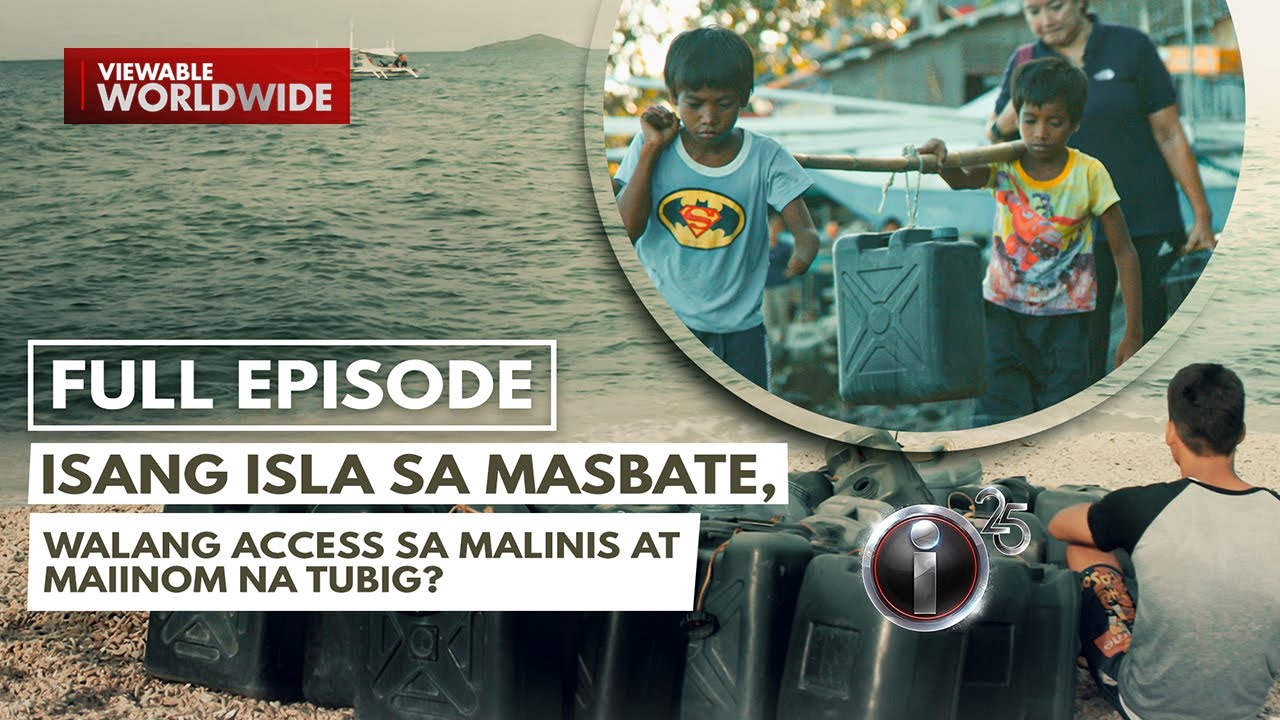I-Witness: "Paraisong Uhaw," a documentary by Kara David (full episode)
Summary
TLDRThe video highlights the challenges faced by a community in the Philippines due to a lack of clean, accessible water. With water sources running dry, people are forced to dig deeper wells, but the water remains murky and unsafe for drinking. Despite the government providing some aid, including funds for cemented wells, the distance between homes and the water sources complicates the situation. The video portrays the hardships of families, including the risk to children’s health due to poor water quality, and the ongoing struggles in a country surrounded by water but still facing severe water access issues.
Takeaways
- 😀 The community faces significant water scarcity, with wells running dry quickly due to the lack of sufficient rainfall.
- 😀 Local residents are working to deepen their wells in order to access water, but the water quality remains poor and unclear.
- 😀 Despite challenges, residents are hopeful that digging deeper wells will allow them to access cleaner water within a few days.
- 😀 The process of fetching water is strenuous, with some people needing to walk long distances to access a clean water source.
- 😀 There are multiple households in the community struggling with the lack of clean water, leading to the sharing of limited water resources among many families.
- 😀 The water collected is sometimes murky and may not be safe for consumption, leaving families to rely on it for non-drinking purposes like washing and cleaning.
- 😀 Some children in the community suffer from waterborne diseases due to the poor water quality, further affecting the health of the families.
- 😀 The community is frustrated by the lack of government support, with minimal aid received for improving water access, such as the construction of cemented wells.
- 😀 Many residents in the community live far from the water source, which exacerbates the difficulty in obtaining clean water.
- 😀 Despite the ongoing water crisis, the community continues to rely on traditional methods to solve their problems, including digging deeper wells, although the water remains contaminated.
Q & A
What is the main issue faced by the community in the transcript?
-The community is facing a severe water scarcity, with wells drying up and the available water being contaminated, making it unsafe for drinking and daily use.
Why is the water in the community often considered unsafe for use?
-The water is often dirty, contaminated, and full of impurities, making it unsuitable for drinking and household activities like cooking and washing.
How is the community attempting to resolve the water shortage issue?
-The community is attempting to dig deeper wells to reach more water. They also rely on the local government, which has funded the construction of a new well to help address the water crisis.
What role is the local government playing in addressing the water problem?
-The local government is providing financial assistance for the construction of a cemented well, but there are challenges due to the distance between the households and the well.
How far are the households from the nearest well?
-The households are quite far from the nearest well, which makes it difficult for them to collect enough water for their daily needs.
What health concerns are raised in the transcript related to the water shortage?
-There are concerns about the health risks posed by the contaminated water, with children and families getting sick from drinking and using the dirty water.
How is the community managing with the little water they have?
-The community is forced to share water, and families divide a single bucket of water among several members for tasks like washing, cooking, and cleaning.
What is the community's hope for the future regarding water access?
-The community hopes that by digging deeper wells, they will be able to access cleaner and more reliable water, allowing them to better meet their basic needs.
How does the water crisis affect daily life in the community?
-The water crisis makes everyday tasks more difficult and burdensome. Families struggle with basic hygiene, cooking, and cleaning, and children are at risk of waterborne diseases.
What specific impact does the water situation have on children in the community?
-The water shortage and contamination are particularly harmful to children, as they are more susceptible to waterborne diseases and illnesses caused by drinking unsafe water.
Outlines

Cette section est réservée aux utilisateurs payants. Améliorez votre compte pour accéder à cette section.
Améliorer maintenantMindmap

Cette section est réservée aux utilisateurs payants. Améliorez votre compte pour accéder à cette section.
Améliorer maintenantKeywords

Cette section est réservée aux utilisateurs payants. Améliorez votre compte pour accéder à cette section.
Améliorer maintenantHighlights

Cette section est réservée aux utilisateurs payants. Améliorez votre compte pour accéder à cette section.
Améliorer maintenantTranscripts

Cette section est réservée aux utilisateurs payants. Améliorez votre compte pour accéder à cette section.
Améliorer maintenantVoir Plus de Vidéos Connexes

Water security remains a problem for many in the Philippines

Trace a Water Drop from the Lake to the Faucet - 2024

DERITA TIADA AIR | Karya Sekolah Watchdoc

Objetivo de Desenvolvimento Sustentável 6 - Água potável e saneamento

'Disyerto sa Dagat,' dokumentaryo ni Kara David (with English subtitles) | I-Witness

Philippine Laws on Water Quality Management | NSCI 203
5.0 / 5 (0 votes)
